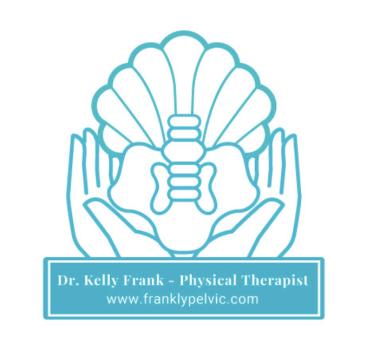“What even is pelvic health physical therapy?”
“There is a physical therapist for down there?!”
“What do you mean it’s not normal to pee my pants after having a kid?”
“My partner and I don’t have sex anymore because it’s so painful”.
“I didn’t know there was help for this?”


These are the all too common questions, concerns, and comments about pelvic health physical therapy I receive from clients. Discussing topics that are oftentimes (still) considered taboo are my favorite things to talk about, so let’s dive in!
What is Pelvic Healthy Physical Therapy?
Pelvic Health Physical Therapy is a specialty within physical therapy focusing on the tissues, muscles, ligaments, and functions of the pelvic floor, diaphragm, trunk, shoulders, hips, (and really the whole body) by fine-tuning how they all connect and work for you in your daily life.
 Yep, you read that right. There are physical therapists who have extra knowledge, certifications, and training, especially for the pelvic floor and its counterparts. We aren’t just talking about your Grandma’s kegels, although if we are, it’s estimated that around 70% of people are not doing them correctly — so that’s something!
Yep, you read that right. There are physical therapists who have extra knowledge, certifications, and training, especially for the pelvic floor and its counterparts. We aren’t just talking about your Grandma’s kegels, although if we are, it’s estimated that around 70% of people are not doing them correctly — so that’s something!
Pelvic Floor Physical Therapists (and Pelvic Floor Occupational Therapists) engage in so much more human function and daily activities that many dismiss as normal (dysfunction) when they are in fact common and can be fixed.
Ranging from diastasis recti (abdominal separation), urinary and fecal incontinence, urinary and fecal urgencies, constipation, pelvic organ prolapse, pelvic pain, vaginismus, vulvodynia, and endometriosis to name just a few common diagnoses.
Who can see a Pelvic Health Physical Therapist?
Anyone with a pelvis. Men, women, and children, no matter the gender or identity; we all have pelvic floors, which means they can have their own level of dysfunction that needs to be addressed and treated. Since this conversation is geared more towards birthing persons or those with children, let’s talk about pregnancy and postpartum issues.
A common misconception is that you should start Pelvic PT (Physical Therapy or Occupational Therapy) after you’ve given birth. Not necessarily. A lot of patients gain knowledge and strategies and can improve their pregnancy and delivery experience by seeking the guidance of a Pelvic PT during pregnancy.
Teaching strengthening exercises, body mechanics, birthing postures, and breathing techniques can be incredibly helpful for the big day and days thereafter. Understanding what your body will endure, the healing process, and having skills you can use at home is empowering.
Manual therapy performed by your physical therapist to improve tissue healing postpartum is crucial to decreasing pelvic pain (dyspareunia) with any penetration, reducing chances of urinary leakage (or fecal leakage), decreasing pelvic organ prolapse risk, improving closure of diastasis recti or tummy separation gaps, and reducing low back pain so you can be your best self.
Joint issues like pubic symphysis pain, sacroiliac joint (SI joint) pains, and other pains should not be dismissed at any obstetric appointments with simply, “that pain will go away once baby arrives.” You have the pain now! Let’s deal with it now!
Pain should never be considered a norm, and it’s important to know your body well and always speak up at any doctor’s visit to ensure you’re receiving the best treatment for you!










 If you or someone you know has pelvic floor dysfunction or wants to discuss issues further but not sure where to start, reach out at
If you or someone you know has pelvic floor dysfunction or wants to discuss issues further but not sure where to start, reach out at 







